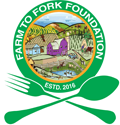Growth, yield and quality of knol-khol (Brassica oleracea var. gongylodes) as affected by fertilizer management
DOI:
https://doi.org/10.5455/faa.48471Keywords:
Bio-fertilizer, organic manures, growth, yield, Brassica oleracea var. gongylodesAbstract
A field experiment was conducted during rabi (winter) season of 2016-2017 at Horticultural Research Center, Department of Horticulture, Chauras Campus, HNB Garhwal University, of Uttarakhand to assess the effectiveness of combined dose of organic manure and fertilizer on knol-khol (Brassica oleracea var. gongylodes) vegetable crop. The study involved twenty treatments viz., no fertilizer control (T0), recommended doses of fertilizers (RDF) 100% (T1), RDF 50% (T2), Azospirillum (T3), Azotobacter (T4), Neem cake (T5), Chicken manure (T6), RDF 75% + Azospirillum (T7), RDF 75% + Azotobacter (T8), RDF 75% + neem cake (T9), RDF 75% + chicken manure (T10), RDF 50% + Azospirillum (T11), RDF 50% + Azotobacter (T12), RDF 50% + neem cake (T13), RDF 50% + chicken manure (T14), Azospirillum + Azotobacter (T15), Azospirillum + neem cake (T16), Azospirillum + chicken manure (T17), Azotobacter + neem cake (T18), Azotobacter + chicken manure (T19), and neem cake + chicken manure (T20). The results showed that the treatment T7 (RDF 75%+ Azospirillum) is more efficient over other treatments in terms of yield. The highest yield was found (61.83% over control) in treatment T7 (RDF 75% + Azospirillum) as compared to control (T0). Different fertilizer-use efficiencies were significantly improved with the application of organic, inorganic and bio-fertilizer over control as well as chemical fertilizer alone. The treatment T7 (RDF 75% + Azospirillum) showed maximum nutrient use efficiency and the minimum value was recorded in T2 (RDF 50%) > T1 (RDF 100%) > T17 (Azospirillum + chicken manure) > T15 (Azospirillum + Azotobacter) > T5 (neem cake) and T0 (control). Study concluded that the combination of organic manure and bio-fertilizer improved the growth and yield of knol-khol (Brassica oleracea var. gongylodes) plant. Therefore, the application of organic manure and bio-fertilizers are recommended for knol-khol production.
Downloads
Downloads
Published
How to Cite
Issue
Section
License
Copyright (c) 2019 by the author(s). This work is licensed under a Creative Commons.

This work is licensed under a Creative Commons Attribution-NonCommercial 4.0 International License.




















